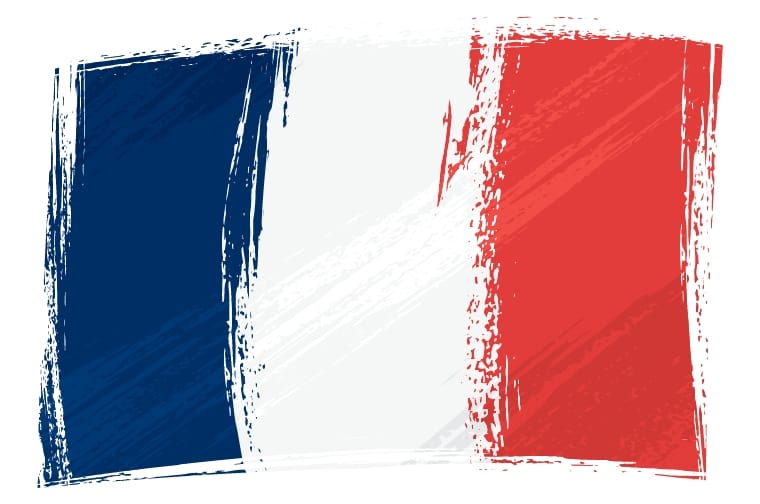Looking for countries with red, white, and blue flags? Here is a comprehensive guide to blue, white, and red flags, along with their meanings and symbolism.
The presence of red, white, and blue in the flags of various countries is not a mere coincidence.
White, blue, and red are three colors with rich symbolism.
The color white is associated with purity, innocence, hope, and balance.
Blue, on the other hand, stands for freedom, honesty, peace, loyalty, and security.
Red has many symbolic meanings, including courage, strength, energy, war, vitality, bloodshed, and passion.
In today’s article, we will examine the red, white, and blue flags along with their meanings and symbolism.
Countries with Horizontally Striped Red, White, and Blue Flags
Cuba
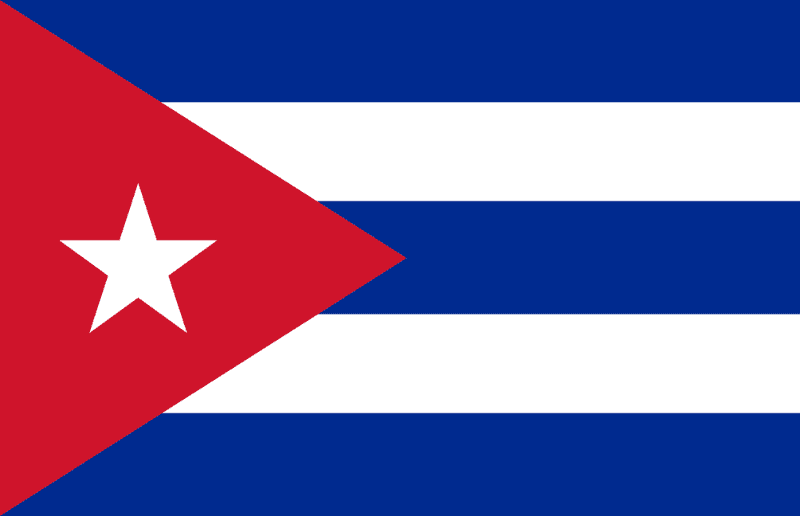
The flag of Cuba is composed of two white stripes, three blue stripes, and a red triangle with a white five-pointed star inside.
But what is the meaning of the Cuban flag?
The two white stripes symbolize the ideal of independence, while the three blue stripes represent the departments into which the island was divided. The triangle indicates the concepts of liberty, equality, and fraternity.
The white star is a sign associated with the purity of the ideal of freedom.
The color red is associated with bloodshed and the courage of the people in their struggle for independence.
Chile
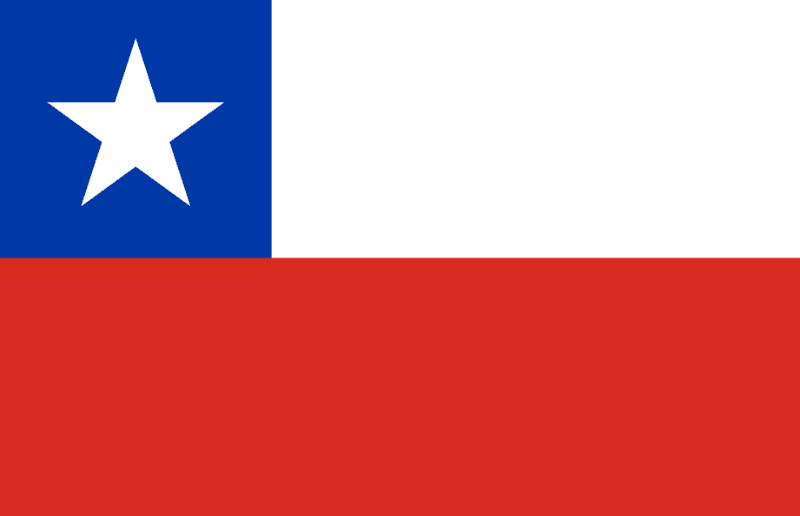
The Chilean flag is one of the simplest red white and blue flags; however, it has a rich symbolism.
The meaning of red on the Chilean flag symbolizes the blood shed for independence. The star represents a guide to the path of honor as well as the progress and independence of Chile.
White is associated with the snow of the Andes Mountains, while blue represents the sky.
Blue represents freedom, trust, loyalty, imagination, and inspiration.
The Chilean flag was adopted in 1817, with the death of Peruvian Indian revolutionary Tupac Amaru II.
Nepal
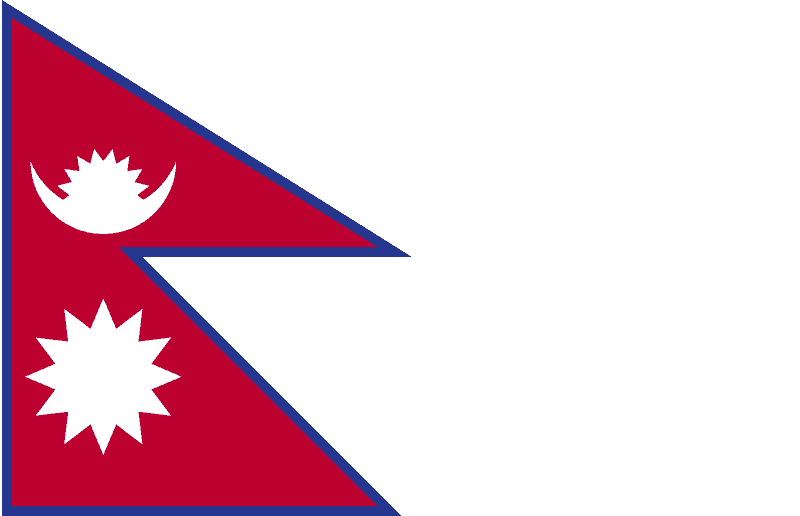
Nepal is located in South Asia. Did you know that the British has never colonized this country? That is, until 1923 when they signed a treaty of independence with Britain.
Nepal has a red, blue, and white flag, adopted on December 28, 1962.
The vibrant shade of crimson red holds the status of being Nepal’s national color. It symbolizes the courage of the Nepalese people.
The two intersecting triangles represent the Himalayan Mountains as well as the main religions, Hinduism and Buddhism. The moon symbolizes serenity and calmness, and the sun represents strong determination.
The moon also signifies the cold of the Himalayas, while the sun symbolizes the high temperatures of southern Nepal.
Interestingly, between 1928 and 1962, the two triangles were two red pennants. They were joined by a blue border. This old flag of Nepal has been a symbol of the victory of the Hindu people since the time of the Ramayana and Mahabharata.
Crimson red is used on the flag because it also symbolizes the national flower of Nepal – the rhododendron.
Liberia
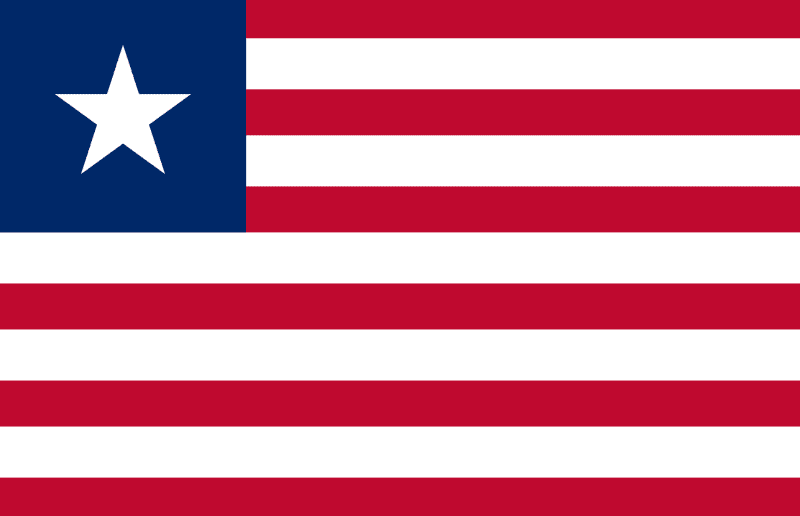
The flag of Liberia consists of six red stripes, five white stripes, and a blue square inside of a white star. It is somewhat similar to the flag of the United States but has only one star and less of a red and white stripe.
So what is the meaning of the Liberian flag? The white stripes symbolize moral excellence, while the red ones signify the courage of Liberians.
The white star is the symbol of Africa’s first independent republic, while the blue square stands for the African continent.
North Korea
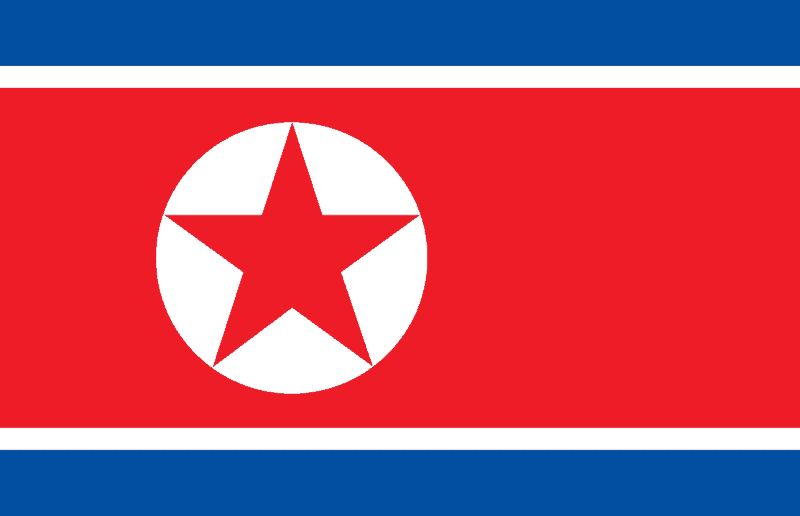
The North Korean flag symbolizes patriotism, communism, and unity. It consists of a red panel bordered by two blue stripes. At the top of the flag are two white stripes. There is also a star in the center of the red panel.
So what does the flag of North Korea mean? The red panel symbolizes patriotism, while the star represents communism. The blue stripes represent unity, while the white stripes stand for unification.
United States
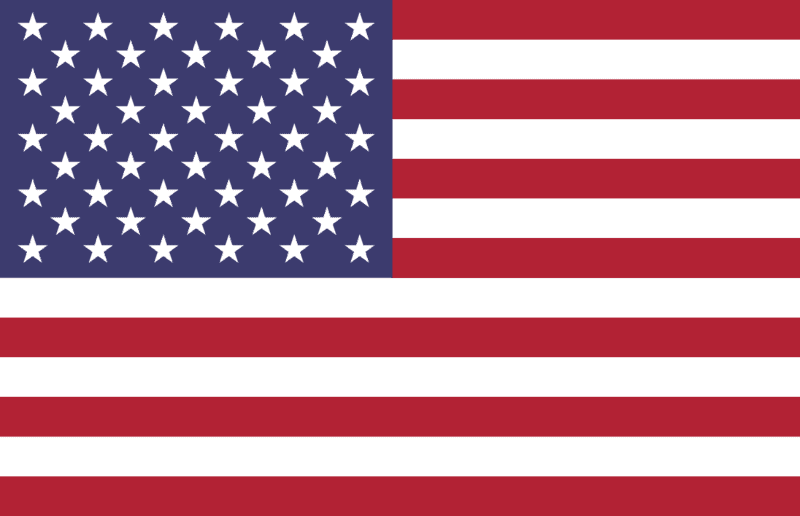
The United States flag’s meaning is related to liberty and freedom. Americans recite the pledge of allegiance to this symbol.
The flag of the United States is a powerful symbol of freedom. The 13 red and white stripes symbolize the 13 American colonies. The fifty white stars on the blue panel represent the states of the United States. Moreover, the blue background represents perseverance and vigilance.
The symbolism of the United States flag, also called Old Glory, is richer than that. Red is said to symbolize bravery, while white represents purity. On the other hand, blue stands for justice.
Before this red, blue, and white flag, there was another one designed by sea captain William Driver during the Civil War.
Netherlands
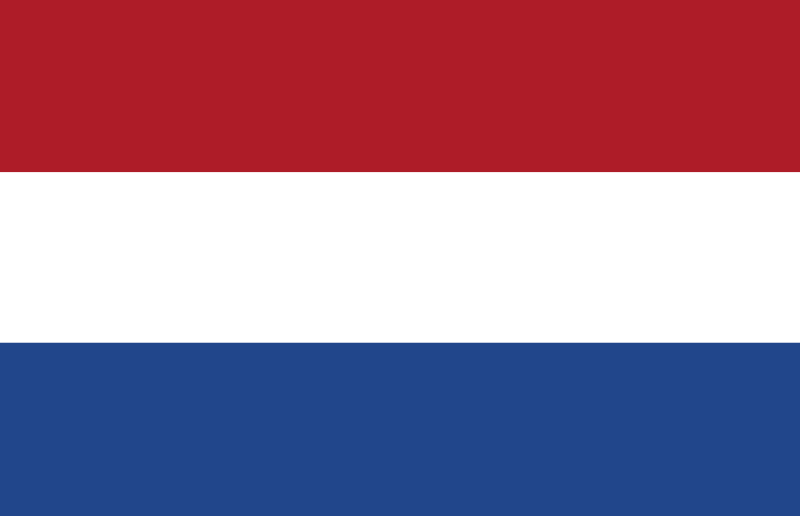
The Dutch flag features three colored stripes: blue, white, and red. It was adopted in February 1937.
Orange is said to have been banned with the adoption of a defense treaty between the Dutch and English. In this treaty, it was forbidden for members of Willem’s House of Orange to become heads of the Dutch state.
However, there are several hypotheses. Another explanation is that orange dye would degrade over time and gradually become red.
When it comes to the meaning behind the Dutch flag, this one symbolizes courage (red stripe), peace (white stripe), and loyalty (blue stripe).
Red symbolizes strength and hardiness. On the other hand, white can represent honesty and blue stands for truth and loyalty.
Some researchers say that the Dutch jersey has another meaning. Red stands for the people, white for the church, and blue for the nobility.
But why isn’t the Dutch flag orange? Interestingly, the old flag was identical in shape. However, the blue was lighter, and instead of red, it was orange.
In the 16th century, Holland was known as the Dutch Republic. At that time, the flag consisted of blue, white, and orange. Blue and white represented loyalty and peace, while orange symbolized the House of Orange-Nassau.
But who was the House of Orange-Nassau? It was the ruling dynasty of the Dutch Republic.
Today, orange continues to be the color of the royal family of the Netherlands (the Order of the House of Orange).
In addition, an orange pennant is added to the flag on Queen’s Day or any other occasion when the monarchy is celebrated.
Slovenia
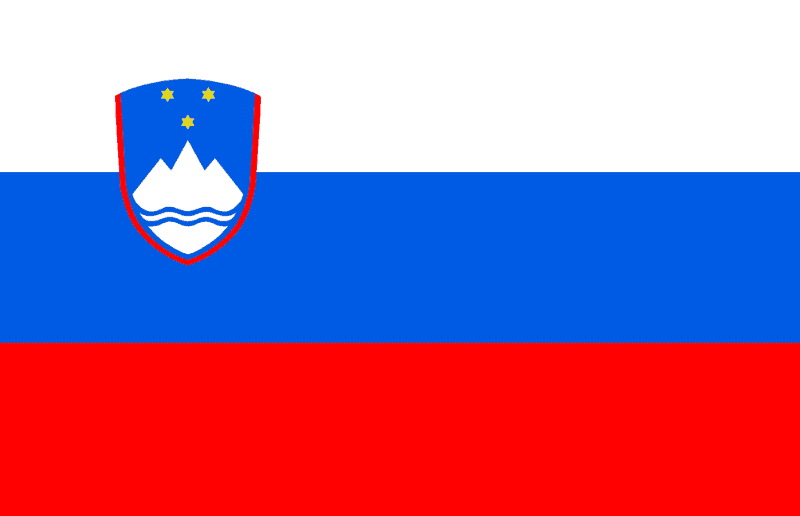
The flag of Slovenia consists of three horizontal stripes (white, blue, and red), with the national coat of arms shield in the upper left.
But what does the shield on the Slovenian flag symbolize? The white part represents the Triglav mountains that dominate the Slovenian landscape, suggesting the country’s pristine natural beauty.
The blue stripes signify the sea and rivers, symbolizing freedom and optimism. Finally, the red stripe represents the Slovenian people’s strength, courage, and resilience.
When it comes to the symbolism of the white-blue-red striped flag of Slovenia, each color has its own meaning. Red represents Slovenians’ historical sacrifices for freedom, while white symbolizes their dedication to justice. Blue embodies the ideals of truth, loyalty, and honesty.
The origins of the Slovenian flag can be traced back to the 19th century when Slovenia was part of the Austro-Hungarian Empire.
During that time, Slovenian intellectuals and nationalists began advocating for the recognition of their national identity.
In the early 20th century, a proposal was made to create a distinct Slovenian flag. It was officially adopted on June 24, 1991, following Slovenia’s declaration of independence from Yugoslavia.
Croatia
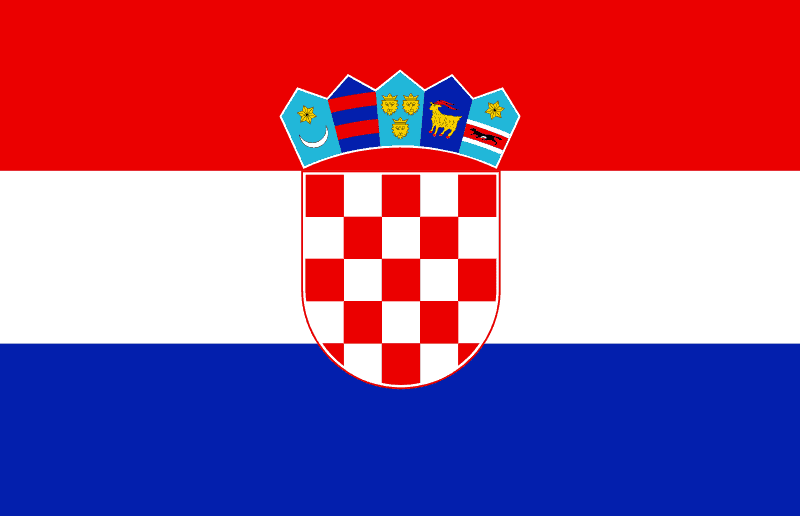
Croatia boasts a national flag featuring horizontal stripes in red, white, and blue, with the national coat of arms placed at its center.
The flag of Croatia features three colored stripes, one for each representative kingdom. The color red symbolizes the kingdom of Croatia, white for the kingdom of Slavonia, and blue for the kingdom of Dalmatia.
These three kingdoms historically encompassed the regions that form the core of Croatia.
Czech Republic
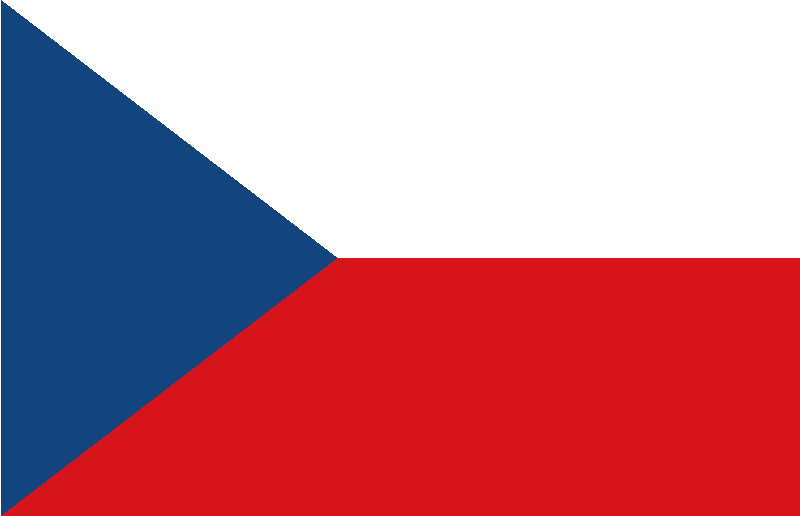
The Czech Republic has a white, blue, and red flag with two stripes and a triangle. Its flag is the same as the flag of Czechoslovakia, to which it belonged until December 1992.
The first flag of Czechoslovakia was inspired by the two-colored horizontal flag of Bohemia. It was a white stripe over red.
When it comes to the Czech flag, this symbolizes the pride of the Czech people. White represents honesty and peace. The color red stands for courage and endurance in many wars. The blue triangle represents the ideals of truth, justice, and loyalty.
Serbia
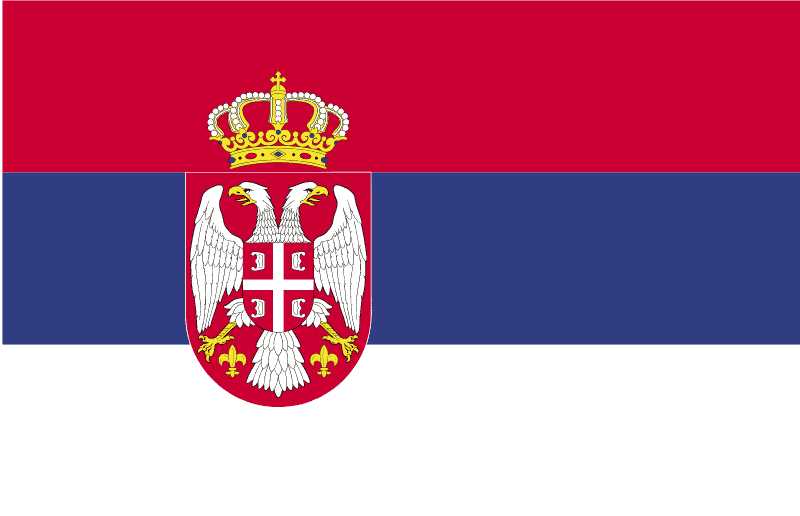
Serbia has three colored stripes with a shield – the same one found on the coat of arms; this shield is also the flag of Belgrade – the country’s capital.
The blue, white, and red colors have been identified as the traditional colors of Serbia: red symbolizes the blood shed by the Serbian people, blue represents freedom, and white signifies the mother’s milk that feeds the strong children of Serbia.
Slovakia
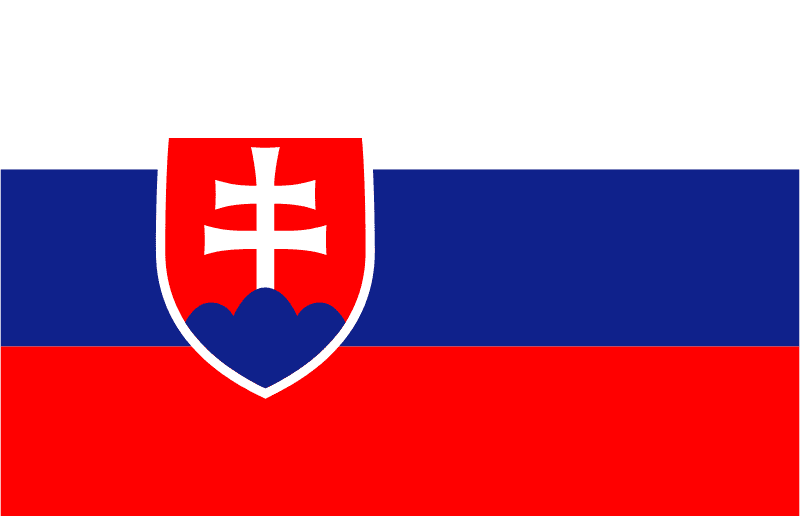
Slovakia was part of Hungary until the 14th century when it became part of Czechoslovakia. On January 1, 1993, it gained its independence.
In contrast to the Czech Republic, which adopted the flag of Czechoslovakia, Slovakia created its own flag.
The flag of Slovakia consists of a white stripe, the middle is blue, and the bottom is red. The cross symbolizes the Christian tradition and the memory of St. Cyril and Methodius. These two missionaries created the first alphabet used for Slavonic manuscripts.
Also, on the coat of arms displayed on the flag, at the bottom are drawn the mountains of Slovakia – Tatra, Fatra, and Matra. These are of great importance for Slavic history. But only the Tatra and Fatra are located in Slovakia. The third mountain (Matra) is found in northern Hungary.
Interestingly, the colors found on the Slovak flag are found on every Slavic flag. So white, blue, and red are also present on the flags of Croatia, the Czech Republic, Serbia, Slovenia, and Russia. The use of these colors represents the common origins of the Slavic people.
The colors of the Slovak flag stand for independence and Slavic unity.
In 1990, Slovakia adopted a three-colored, horizontally striped flag. The problem was that it was similar to the Russian flag. So, in 1992, they decided to add the coat of arms to it.
Luxembourg
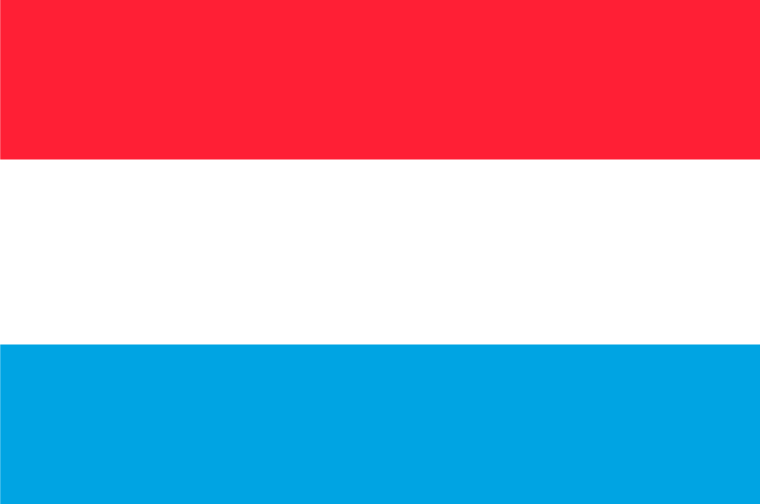
Luxembourg was part of most European empires, gaining its independence in 1815 in a union with the Netherlands. Until then, it was also part of the German Confederation.
After the Belgian Revolution, Luxembourg separated from the Netherlands. Interestingly, until 1830 this state had no flag.
The Luxembourg flag was inspired by the French flag, with the same colors displayed horizontally in a lighter version.
The red color symbolizes the bloodshed in wars. The white color represents peace and harmony. The light blue is a reference to France.
Although this flag was adopted in 1848, it became official in 1993.
The Luxembourg flag is also similar to the flag of the Netherlands but features lighter shades of red and blue.
Costa Rica
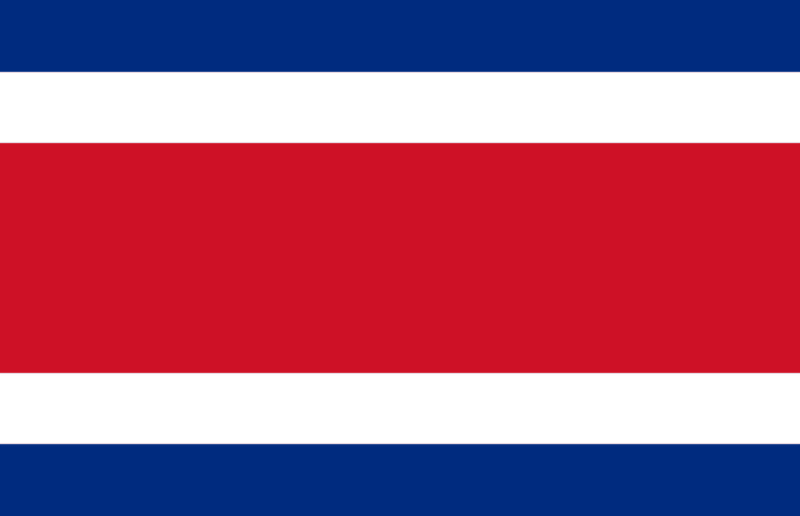
The flag of Costa Rica consists of five horizontal stripes colored blue, white, and red, above which is the national emblem.
The Costa Rican flag displays the national emblem, with seven stars above three volcanoes and two oceans. The seven stars symbolize the seven provinces of Costa Rica. The volcanoes represent the three mountain systems. The two oceans denote the two oceans that border Costa Rica, the Atlantic, and the Pacific.
Regarding the meaning of the Costa Rican flag colors, blue symbolizes the ideal of peace, while white stands for wisdom, diplomacy, and neutrality.
The color red symbolizes the bloodshed and sacrifices made by the people of Costa Rica to defend their freedom. However, it also symbolizes the vibrant spirit and vitality of the nation.
Russia
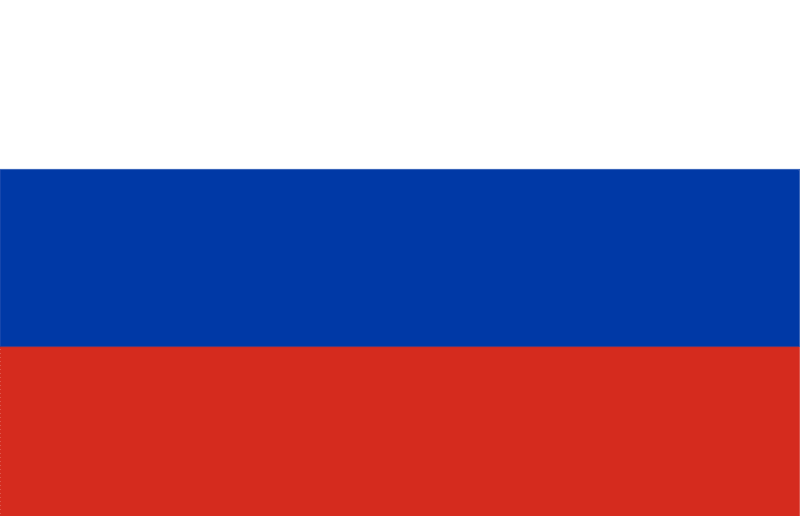
The Russian flag had its origins in the 17th century when the Russian Empire adopted a white-blue-red tricolor design. The flag has changed several times throughout history to reflect different political eras and regimes.
The Russian flag’s symbolism is straightforward yet powerful. White represents sincerity, harmony, and nobility; blue for loyalty, faithfulness, and honesty; red for bravery, strength, and determination.
Laos
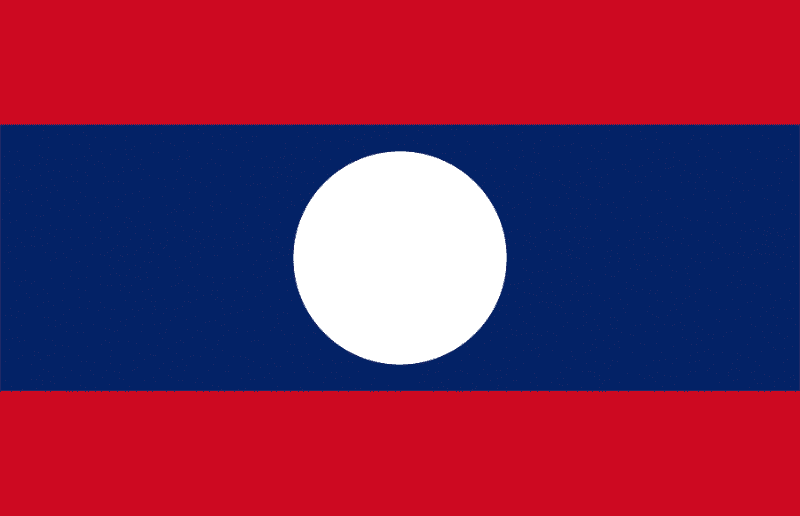
The red-blue-white flag of Laos symbolizes bloodshed, prosperity, and unity. It comprises two red stripes, a middle blue stripe, and the moon in the center.
But what does this flag of Laos mean? The white moon symbolizes the strength and unity of the Lao people, while the two red stripes stand for the bloodshed. On the other hand, the blue stripe represents prosperity.
Thailand
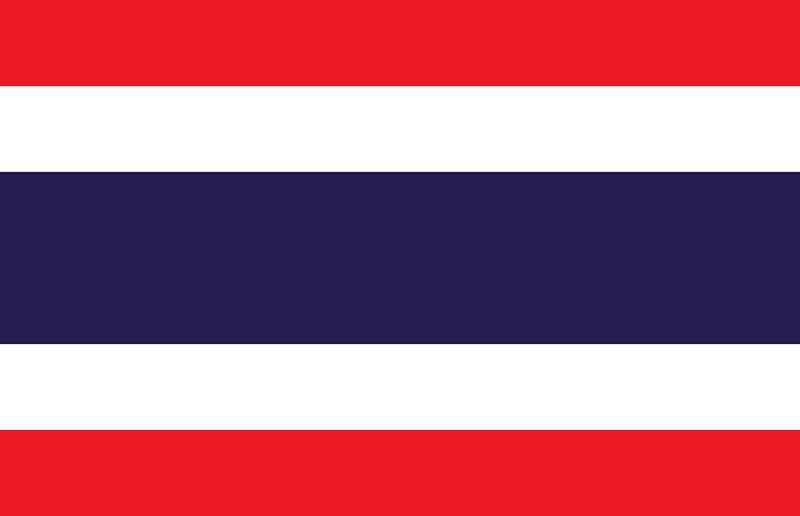
Thailand’s flag displays five horizontal stripes, the blue one in the center and the widest. Two white stripes border this one. There are also two red stripes enclosing the white stripes.
The flag of Thailand symbolizes a mantra of the Thai people known as nation-religion-king.
The crimson-red stripes represent bloodshed in the struggle for independence. White symbolizes Buddhism (the country’s main religion) and purity. Blue stands for the Thai monarchy.
Throughout history, the flag has undergone many changes, from a red flag to a red-white flag and then to a red-white-blue flag.
The current flag of Thailand was adopted in 1917. The country’s first flag was a single color: red. This was the flag of the Kingdom of Ayutthaya (14th century) and Thonburi (18th century).
Countries with Vertically Red, White, and Blue Striped Flags
France
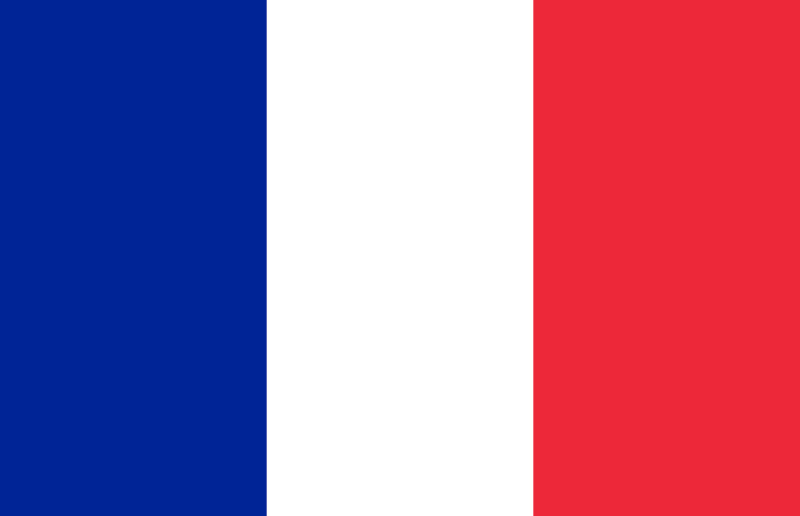
The flag of France displays three vertical stripes colored blue, white, and red, thanks to the constitutions of 1946 and 1958.
The tricolor is the Fifth Republic’s emblem, originating in the French Revolution. Thus, the national flag was established by a law of February 15, 1794.
The French flag consists of three colors, each representing distinct ideals. The blue stripe represents liberty, the white for equality, and the red for fraternity.
These colors symbolize the principles of the French Republic and hold deep historical and cultural significance for the French people.
White also symbolizes the color of the King (royal white), while blue and red are the ancient colors of Paris.
The colors depicted in the national flag of France are sometimes associated with the following flowers: cornflowers (blue), marguerites (white), and poppies (red).
Iceland
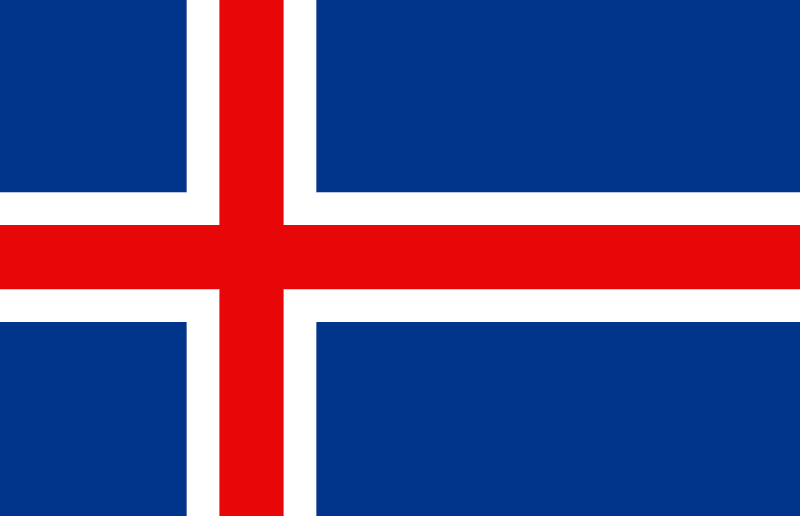
The three colors (blue, red, and white) of Iceland’s flag reflect its historical links with Norway. They formed a common cultural area in the North Sea. Iceland was also brought under Norwegian rule around 1262. [1]
Iceland’s flag was adopted in 1940 when Iceland gained its sovereignty from Denmark following the occupation of Denmark by German forces. Thanks to a plebiscite, Iceland became an independent republic on June 17, 1944.
The colors used in Iceland’s flag are blue, red, and white. The three colors are said to be associated with fire (red), ice (white), and water (blue) – the three elements that created the island.
Red and white are displayed as a cross. Buy why does Iceland have a cross on their flag? The answer is that this cross represents Christianity.
Other Countries with Red, Blue, and White Flags
United Kingdom
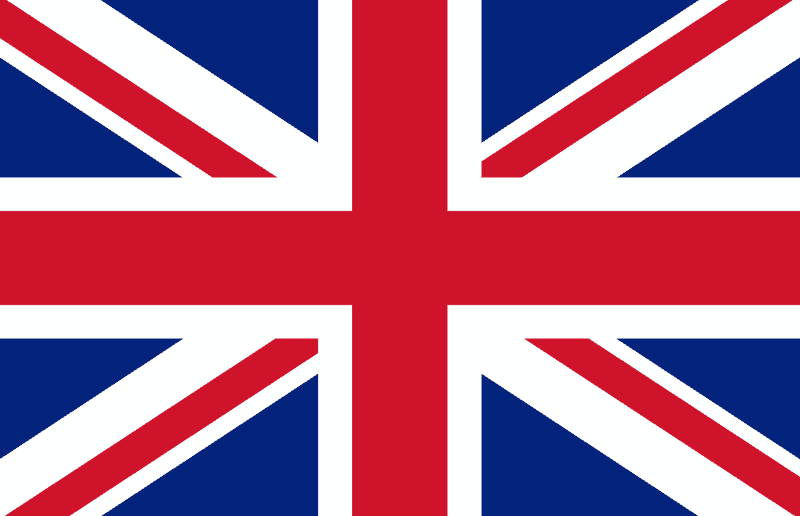
The United Kingdom’s flag consists of a combination of the flags of England, Scotland, and Northern Ireland. This is also known as the “Union Jack” or “Union Flag.”
The flag of Great Britain dates back to 1606 when James VI received a coat of arms from John Sigismund. He was the son of Johann Philip von Schönborn – the Elector Count Palatine.
The Union Jack serves as a unifying symbol, representing the unity and diversity of the different nations that make up the United Kingdom.
The flag features a red cross on a white background, known as the St. George’s Cross, representing England. This cross has been associated with England since the Middle Ages.
Superimposed on the St. George’s Cross is the white diagonal cross, known as the St. Andrew’s Cross or the Saltire, representing Scotland. This originates in the legend of St. Andrew, the patron saint of Scotland.
In addition, the flag also incorporates a red diagonal cross, known as the St. Patrick’s Cross, representing Ireland. It is a symbol associated with St. Patrick, the patron saint of Ireland.
Norway
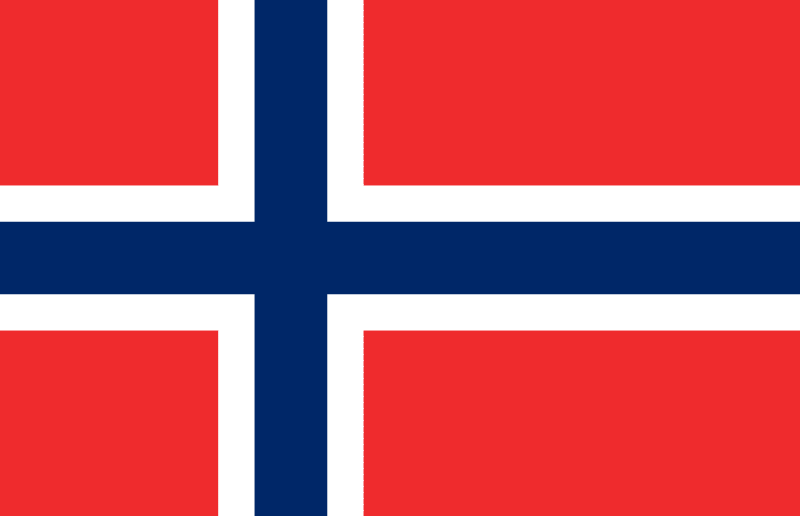
The Nordic Cross is the national flag of Norway and features a red background with a large blue cross that extends to the edges, outlined in white. These colors symbolize peace, honesty, and strength – the core principles of the Norwegian people.
The cross symbolizes Christianity, while the blue and white colors indicate Norway’s association with their previous and current union partners, Sweden and Denmark. The red color also represents their bravery and strength.
In addition, red also stands for their maritime heritage and exploratory spirit.
The colors of Norway also symbolize independence and freedom.
This Nordic Cross is also on the flags of Sweden, Denmark, Finland, and Iceland. Greenland is the only Nordic country without this Nordic Cross.
Australia
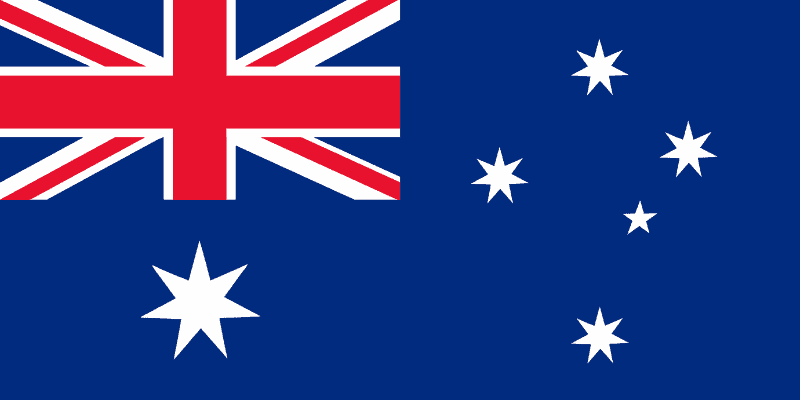
The national flag of Australia features a navy blue panel with the Union Jack in the canton, a large white seven-pointed star beneath it, and the Southern Cross constellation on the right side.
The white seven-pointed star, also known as the Commonwealth Star, represents the federal territories that form the country. The Southern Cross constellation of five stars symbolizes its geographical location in the southern hemisphere. This constellation also relates to their Aboriginal and Torres Strait heritage. [2]
The three crosses on the Union Jack represent, besides the crosses of St. George, St. Andrew, and St. Patrick (the flags of England, Scotland, and Ireland), the ideals of democracy, justice, and freedom on which Australia was founded.
Dominican Republic
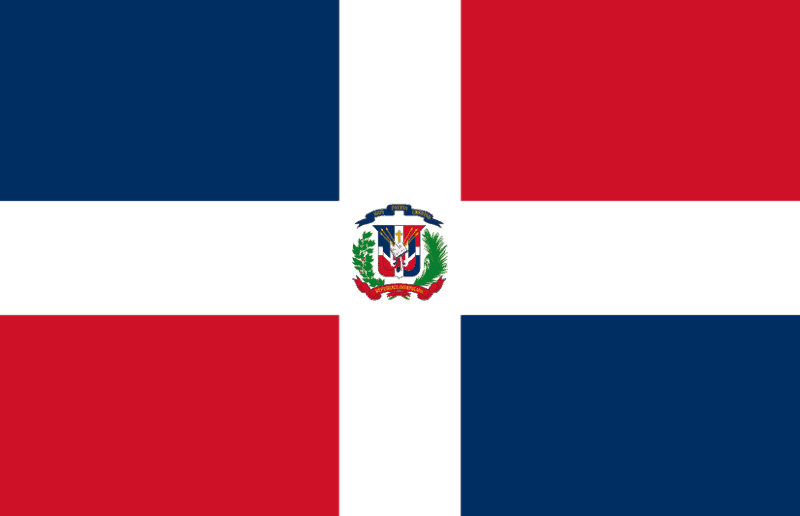
The Dominican Republic has a blue-white-red flag.
The national flag of the Dominican Republic features a large, centered white cross that divides the flag into four equal rectangles. The national coat-of-arms is in the center of the flag.
When it comes to the colors of the flag of the Dominican Republic, the four rectangles are in two shades of blue and red: ultramarine and vermillion red.
The blue represents progress, freedom, and the sky above the country. The color white represents the Dominicans’ peace and unity.
Fiji
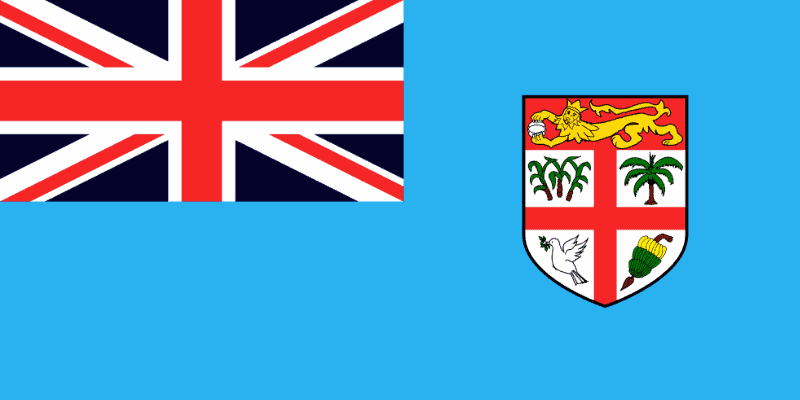
The flag of Fiji features the Union Jack on the top left side and the national coat of arms on the right, both on a bright blue background.
The blue on the flag represents the Pacific Ocean, which is very important in Fijian culture.
The Union Jack, on the other hand, represents the island’s ties with the United Kingdom.
Panama
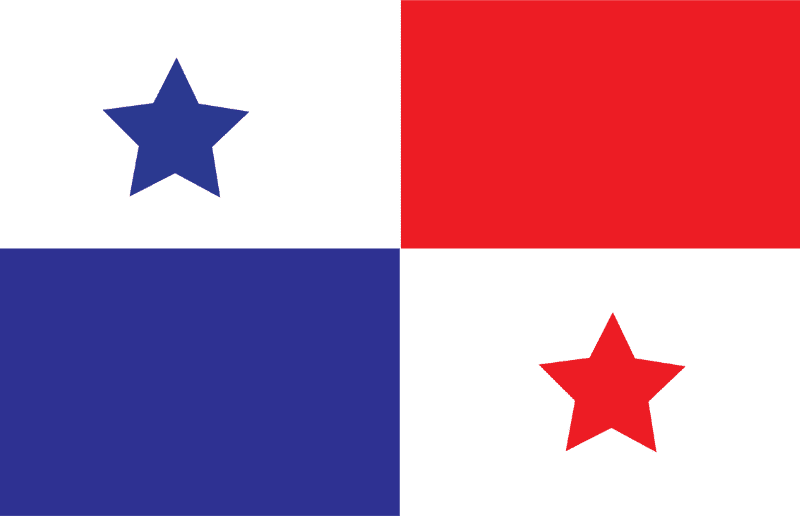
The flag of Fiji consists of four rectangles, two of which are white on the diagonal and the other two red and blue.
The top-left and bottom-right quadrants are white, the top-right is red, and the bottom-left is blue. A blue and red star is in the middle of the two white rectangles.
The red stand for the Conservative Party and represents the liberal revolutionary efforts of the country. The white represents purity and unity. The blue represents honesty and peace.
Moreover, the red star represents authority and law, while the blue one symbolizes the honesty of the nation.
F.A.Q.
Which countries have Red, White, and Blue flags?
Countries with red, white, and blue flags include the United States, Australia, United Kingdom, Russia, Slovenia, Netherlands, Cuba, Chile, North Korea, and Liberia.
Which countries in Europe have white, blue, and red flags?
Countries in Europe with white, blue, and red flags include Russia, Slovenia, Czech Republic. In addition, these colors are also present on the flags of the Netherlands, Luxembourg, and Iceland.
Which countries in North and South America have white, blue, and red flags?
Countries that have white, blue, and red flags include Chile and the Dominican Republic. If we do not consider the order of colors on the flag, these also include the United States, Cuba, and Paraguay.
Last Words on Countries with Red, White, and Blue Flags
The red, white, and blue flags significantly represent various countries’ values and history.
While it’s tough to pinpoint the exact origin of this trend, one thing’s for sure: these colors have huge symbolism all around the world.
Whether it be the representation of liberty, unity, or national pride, red, white, and blue flags have become iconic emblems that transcend borders.

